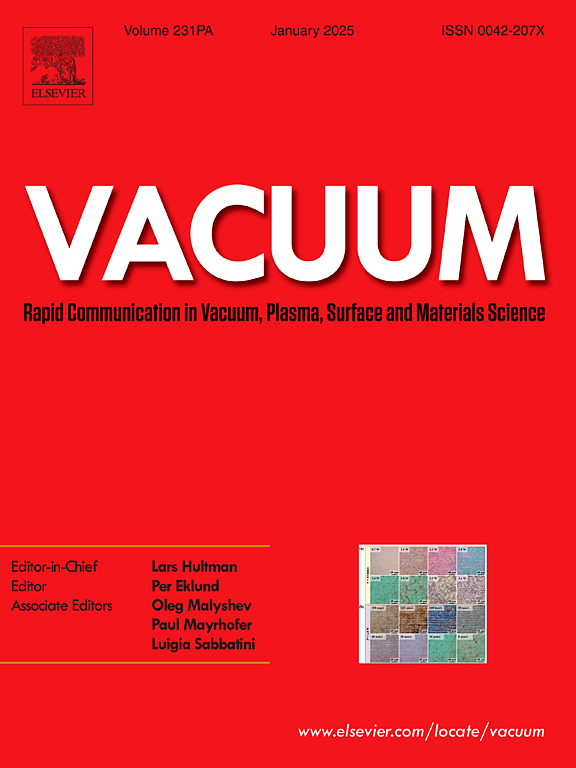Electric field characterization in atmospheric-pressure pulsed bipolar plasma catalysis of organic waste gas
IF 3.8
2区 材料科学
Q2 MATERIALS SCIENCE, MULTIDISCIPLINARY
引用次数: 0
Abstract
The electric field in pulsed bipolar plasma catalysis was characterized using the temperature functions and electric parameters of reactants (toluene and heptane), products, catalysts (La0.7Sr0.3MnO3/mullite), and dielectric barriers. An equivalent electrical circuit was established to demonstrate the behavior of plasma current phases. The optical emission spectra of discharge and Lissajous figures at various temperatures were used to identify dielectric barrier and surface discharges. The applied voltage composition was divided into three discharge phases, namely rapid pulse, reduced pulse and stretched release phases. Their coefficients were estimated to determine the phases’ roles in plasma catalysis. The formulas for applied voltage and discharge current in plasma catalysis were established in accordance with the concepts of the three phases. The electric field in the plasma catalysis was characterized using an established theoretical formula, various measurement techniques, and feasible approaches for estimating various electric field parameter values at different plasma catalytic temperatures were proposed.
求助全文
约1分钟内获得全文
求助全文
来源期刊

Vacuum
工程技术-材料科学:综合
CiteScore
6.80
自引率
17.50%
发文量
0
审稿时长
34 days
期刊介绍:
Vacuum is an international rapid publications journal with a focus on short communication. All papers are peer-reviewed, with the review process for short communication geared towards very fast turnaround times. The journal also published full research papers, thematic issues and selected papers from leading conferences.
A report in Vacuum should represent a major advance in an area that involves a controlled environment at pressures of one atmosphere or below.
The scope of the journal includes:
1. Vacuum; original developments in vacuum pumping and instrumentation, vacuum measurement, vacuum gas dynamics, gas-surface interactions, surface treatment for UHV applications and low outgassing, vacuum melting, sintering, and vacuum metrology. Technology and solutions for large-scale facilities (e.g., particle accelerators and fusion devices). New instrumentation ( e.g., detectors and electron microscopes).
2. Plasma science; advances in PVD, CVD, plasma-assisted CVD, ion sources, deposition processes and analysis.
3. Surface science; surface engineering, surface chemistry, surface analysis, crystal growth, ion-surface interactions and etching, nanometer-scale processing, surface modification.
4. Materials science; novel functional or structural materials. Metals, ceramics, and polymers. Experiments, simulations, and modelling for understanding structure-property relationships. Thin films and coatings. Nanostructures and ion implantation.
 求助内容:
求助内容: 应助结果提醒方式:
应助结果提醒方式:


